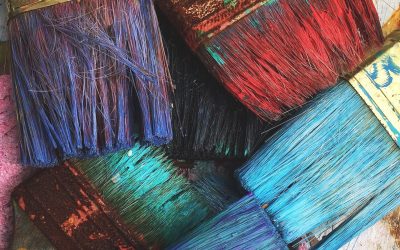Parents whose children exhibit exceptional ability in one or more areas may be wrestling with uncertainties and misconceptions about giftedness, and thus may be unsure about how best to support their child’s optimal growth.
Here is some information for parents who want to know more about gifted-level development, or who are struggling as they try to understand or traverse educational landscapes.
Seeing Giftedness More Flexibly
“A child’s current achievements are works in the making, and future accomplishments are unknown. Cultivating gifted-level development is a multi-faceted endeavor.”
~ ABCs of Raising Smarter Kids, p. 50
Giftedness comes in many forms. It is domain-specific in its development—so, for example, a child may have mathematical, musical, linguistic, emotional, social, artistic, or other kinds of strengths. Moreover, there are continuities and discontinuities across the life span. A person’s capabilities, interests, learning preferences, attitudes, behaviors, and individual requirements are always in flux.
The best and perhaps simplest way to think about giftedness is to conceptualize it as a current need for special education or differentiated learning provisions in one or more areas. Giftedness is dependent upon experiencing new and appropriately-targeted learning opportunities over time. Therefore, it’s important to find the right educational fit for children to help them flourish.
What Does the Right Fit Look Like?
Appreciate children’s learning differences and personal characteristics. Provide choice. Honor their curiosity. Help kids recognize and build upon their strengths and talents.
Two essential factors to consider are suitability and relevance. That means matching curriculum to ability (adapting curriculum for those who are advanced relative to their age or grade), and also making sure that the learning is meaningful.
Encourage children to connect what they already know with new understandings and experiences; to explore; to find creative outlets; to ask questions; to play, interact, and collaborate with others; and to develop a “mastery orientation.” This is akin to a love of learning—valuing and building upon knowledge, and being willing to seek and embrace challenges.
Parents can model curiosity, a desire to learn, resilience in the face of difficulties, and openness to ideas. That same kind of approach will also serve children well as they encounter various kinds of programs, academic offerings, and circumstances from one school day/week/month/year to the next.
Assessing Giftedness – How Can Parents Help Kids Navigate Effectively?
A child’s learning needs should be determined on an individual and on-going basis.
Parents often find assessment and gifted identification practices confusing. Let’s cut to the chase. Assessment practices should be comprised of multiple measures, and inform learning. That is, they should be fair, flexible, subject-specific, and continuous—integrated into instruction, and woven into classroom learning processes. However, this is not always the case, and parents may feel that educational measurement and evaluation protocols are riddled with controversies, inconsistencies, and complexities.
A good rule of thumb is to envision the goal of assessment: which is to make carefully reasoned decisions about how to meet a child’s ever-changing learning needs. And, the best way to accomplish this is if teachers take a diagnostic approach and use children’s understandings to inform daily instruction. (See the article Dynamic Assessment at The Creativity Post.)
Although a one-time test such as an IQ test may provide some useful information (and maybe even a “label” of sorts), rather than trying to find out “Is my child gifted?” it makes more sense to seek answers to the question, “What does my child require in order to thrive?” To that end, encourage connections between activities and domain-specific learning (and other) needs, day by day. To discover more about an “Optimal Match” approach—one that maximizes connectivity between learner and learning by aligning identification and programming practices—check out Section III: Being Smart about Meeting Gifted Learning Needs in Being Smart about Gifted Learners, 3rd Edition. (Benefits of an Optimal Match approach, and information for parents, teachers, students, and psychologists, can also be found by scrolling down the book’s website page, here.)
4 Practical Take-Aways for Parents
Every child is entitled to an education commensurate with his/her abilities.
Parents can help make this happen! Here are some tips:
- Collaborate. Create effective and respectful partnerships with your child’s teachers. “By understanding what teachers do, and how they go about doing it, parents are better equipped to be effective collaborators and advocates for children’s learning.” (ABCs of Raising Smarter Kids, 137)
- Be vigilant and responsive. Children who have exceptionally advanced learning needs require flexibly responsive educational attention. Engage in effective dialogue with others to enlighten (and possibly transform) your thinking, attitudes, and
- Advocate. Spread the word about the importance of acquiring more teacher development programs that will enhance service provision for gifted learners, and fortify the conceptual framework of gifted education.
- Empower yourself! Gather—and use—information and resources on giftedness, gifted education, and ways to support and encourage children’s optimal growth at home, school, and beyond.
Last Words
“In every classroom, there are certain principles of best practice that encourage high-level learning outcomes. We characterize these as the 5 Rs of teaching to support gifted development: being Resourceful; Reasonable; Receptive to changes; Respectful of students’ feelings and abilities; and Responsive to their questions.”
~ Being Smart about Gifted Learning, 3rd Edition, p. 142-143
The best learning opportunities are co-created with students, and are designed or adapted for their interests and levels of readiness. Everyone involved in the process of ensuring that children thrive must continue to work cohesively, stay informed, reinforce alliances, create new ones, and be attuned to kids’ individual learning needs and life’s ever-changing realities and circumstances.
Author’s Note:
This article is an updated version of one that I wrote that was originally published in Parent Guide News.








